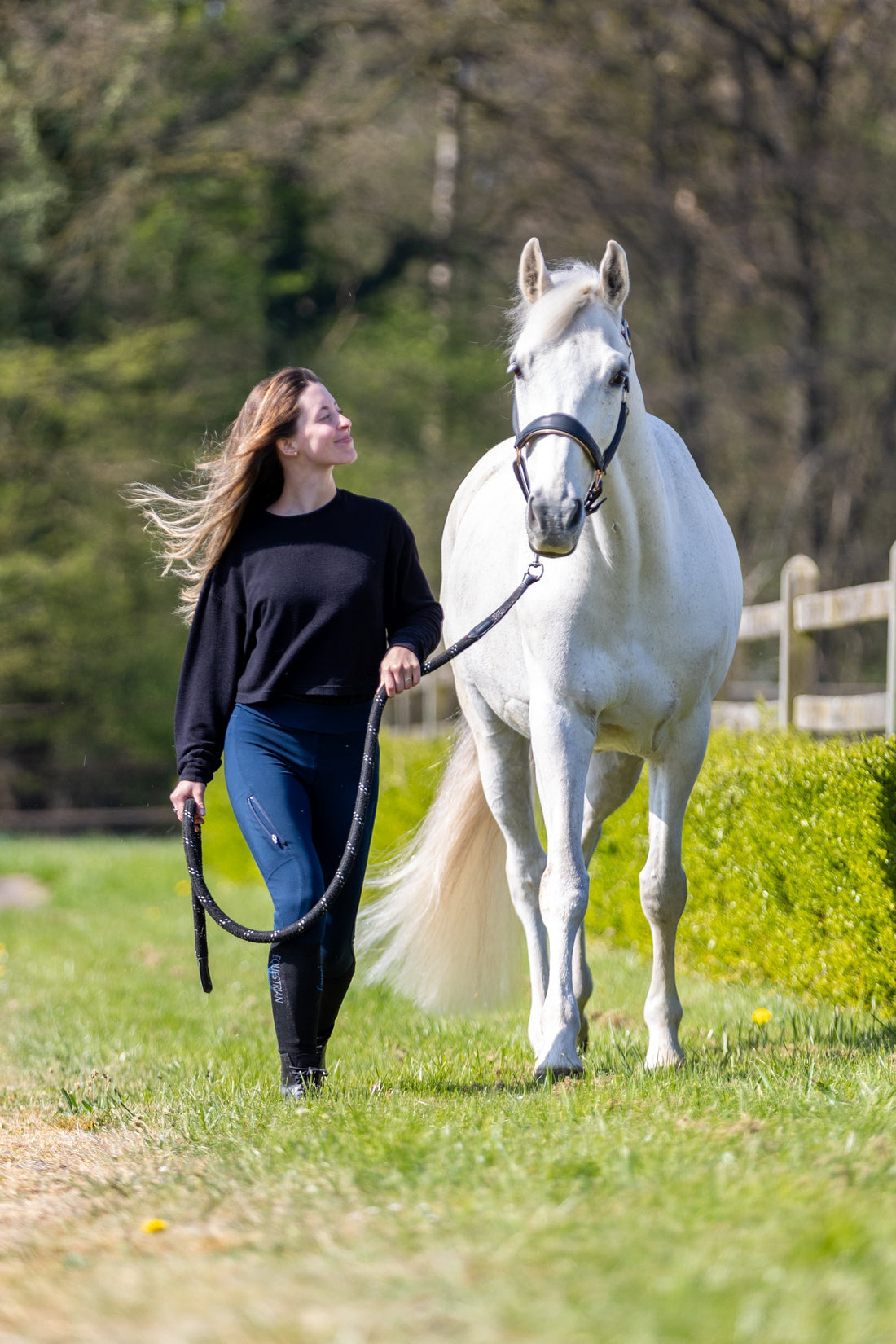How to transit from stable to pasture?
4 min

Sun’s out, horses out! Let’s open the stable doors and watch your horse gallop off into the pasture... Wait, hold your horses (literally). The switch from stable life to pasture isn’t just about turning them out and hoping for the best. From energy shifts to herd drama, there’s a bit more to think about.
Here’s what to keep in mind for a smooth, safe and happy transition from indoor life to field freedom:
Does my horse need a blanket?
Horses coming from a warm stable might need some time to adjust to temperature swings. If it’s damp, windy, ... consider using a light blanket (especially for clipped horses or seniors). You can reduce blanket use as their tolerance adjust.
Tip: watch out for shivering, hunched posture, or tight muscles. These are all signs your horse is chilly.
Mind the energy shift
Spending time in the pasture means movement and fresh grass... which means more natural energy. Don’t be surprised if your laid-back stable snoozer suddenly has a pep in their step. And this can affect your training sessions!
Or it could be the other way around: because your horse is moving more on their own, they might not be in the mood to do high intensity workouts.
Tip: In the early weeks, dial down the intensity. Focus on light work while your horse is adjusting physically and mentally.
The mental shift from a quiet stable to an open pasture is huge. New sounds, friends, space, weather and bugs can make a horse more distracted. Combine that with digestion adjusting... You might want to ease up on expectations.
Tip: Allow for shorter, more frequent training sessions.
Herd management
Going from solo life in the stable to group turnout? Social dynamics will kick in: sometimes gentle, sometimes not. Horses need to sort out their hierarchy (again) and some fights are unavoidable.
- Avoid throwing in new horses in the herd without an introduction. Consider starting with fence-line interactions.
- Observe for kicks, bites or bullying. This behavior is normal while they are figuring out their herd dynamics, but early intervention is key to prevent injuries.
- Make sure there’s enough space and water to reduce competition.
Tip: lonely horses may suddenly show signs of separation anxiety once they bond with new pasture friends. Build in transitions to avoid stress when bringing them back. This is where a short, frequent training session will come in handy. It doesn’t need to take long, just long enough for them to get used to being away from new friends.
Set up a grazing plan
A gentle transition is key:
- Days 1–3: 10–15 minutes on pasture
- Days 4–7: Up to 30 minutes
- Week 2: 1–2 hours
- Week 3: Extend to 3–4 hours if tolerated
- Week 4: Gradually increase toward full turnout
Tip: Feed hay before grazing to slow down grass intake.
Strip gazing
Another technique for transitioning to pasture is strip gazing. Instead of opening the whole field at once, you divide the pasture into smaller sections and gradually allow access to fresh strips of grass over time. This not only helps limit overeating but also ensures your horse gets fresh grass each time. It’s especially helpful for horses prone to laminitis or weight gain, as you can control how much fresh grass they get each day.
This way, you’re also protecting and extending the life of your pasture!
Tip: If your horse tends to overeat or is at risk of laminitis, you can also consider a grazing mask. It allows them to enjoy time on pasture and socialize with the herd, while limiting the amount of grass they can consume.
Final note
Going from stall to pasture is not just a physical change: it’s a complete lifestyle shift. Ease your horse in, be mindful of temperature, energy and social stress. This way you can help your horse settle in smoothly for a healthy, happy grazing season.
- Een selectie kiezen resulteert in het geheel verversen van de pagina.
- Opent in een nieuw venster.